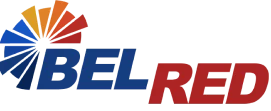Carbon monoxide, as we’ve written about on the blog previously, is one of the most dangerous gases that can be present in the home. Because of its odorless nature, it can be very difficult to detect before it becomes a danger to those living in the home. In order to help mitigate the risks of carbon monoxide leaks and other problems, simple inspection and maintenance steps should be taken on all home gas heating systems and other appliances.
Here are a few tips and precautions to take that can help you prevent carbon monoxide issues in the home:
· Look for rust or soot around the point of flame or heat exchange in your heating unit. Discoloration or abnormal flame color can also be warning signs of ineffective or incomplete combustion, which can lead to excess gas making its way into your home.
· Check all venting systems for proper functionality on your heating system. By ensuring proper venting and air flow where necessary, you can prevent air and gas flow issues from presenting a problem when it comes to carbon monoxide. The vent system should always be in good condition and of high integrity.
· Make sure your entire system is clean. Regular cleaning and maintenance is key to avoid blockages and restrictions, which can potentially lead to dangerous issues with gas units. Pay attention to areas around flue passages and near combustion points like heat exchangers. These areas are especially crucial when it comes to cleanliness and proper functionality.
· Beyond visual inspection of the flame from the burner, proper tests should be done. There are some that can be done by experienced homeowners. It is highly recommended that an electronic carbon monoxide analyzer with digital display is used when testing CO levels in these heating units.
· Always have working carbon monoxide detectors in your house. If you run into any issues or dangers with carbon being present, an effective monitor can alert you to the issue so you can keep yourself and your loved ones safe.
Gas heating units can be especially dangerous when it comes to maintenance, inspection and repair. It is always recommended that if there is even the least bit of uneasiness or unfamiliarity with a project or inspection such as those listed above, a professional should be brought in for assistance. They can also provide more advanced testing and inspection to ensure the highest level of safety.
For example, in addition to the tests listed above, BelRed also use a special dye test on heat exchangers to test for cracks and leaks. We are much more thorough than most companies in testing for CO leaks because we understand the danger of this gas. The safety and health of our customers is always our top priority.
We go through extremely extensive testing when it comes to checking for CO in the home—most times even more than utility and gas companies! If you think you may have issues with carbon monoxide risk in your home, don’t hesitate to contact us today so we can help with a thorough inspection.







